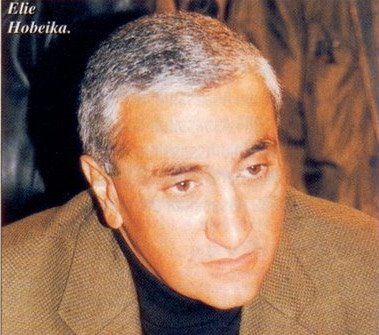
From The Edge of Shadow Wars
Syria: Four Blackhawk helicopters skimmed across the Iraqi border, landing at a small farmhouse near the town of al-Sukkariyeh. Black-clad soldiers poured from the choppers, laying down a withering hail of automatic weapons fire. When the shooting stopped, eight Syrians lay dead on the ground. Four others, cuffed and blindfolded, were dragged to the helicopters, which vanished back into Iraq.
Pakistan: A group of villagers were sipping tea in a courtyard when the world exploded. The Hellfire missiles seemed to come out of nowhere, scattering pieces of their victims across the village and demolishing several houses. Between Jan. 14, 2006 and April 8, 2009, 60 such attacks took place, killing 14 wanted al Qaeda members along with 687 civilians.
In each of the above incidents, no country took responsibility or claimed credit. There were no sharp exchanges of diplomatic notes before the attacks, just sudden death and mayhem.
War without declaration
The F-16s were Israeli, their target an alleged shipment of arms headed for the Gaza Strip. The Blackhawk soldiers were likely from Task Force 88, an ultra-secret U.S. Special Forces group. The Pakistanis were victims of a Predator drone directed from an airbase in southern Nevada. Each attack was an act of war and a violation of the United Nations Charter. Each attack drew angry responses from the country whose sovereignty was violated, but since neither the Israelis nor the United States admitted carrying them out, the diplomatic protests had no place to go.
The “privatization” of war, with its use of armed mercenaries, has come under heavy scrutiny, especially since a 2007 incident in Baghdad in which guards from Blackwater USA (now “Xe”) went on a shooting spree, killing 17 Iraqis and wounding scores of others.
But the “covertization” of war has remained largely in the shadows. The attackers in the Sudan, Syria and Pakistan were not private contractors, but U.S. and Israeli soldiers presumably acting under orders from their respective military command.
In his book The War Within: Secret White House History 2006-2008, the Washington Post’s Bob Woodward disclosed that the U.S. military has developed “secret operational capabilities” to “locate, target, and kill key individuals in extremist groups.”
In a recent interview during a “Great Conversations” event at the University of Minnesota, two-time Pulitzer Prize-winning investigative journalist Seymour Hersh revealed a U.S. military “executive assassination ring,” part of the Joint Special Operations Command (JSOC).
“It’s a special wing of our special operations community that is set up independently. They do not report to anybody, except in the Bush-Cheney days, they reported directly to Cheney’s office,” he said, bypassing the Joint Chiefs of Staff and Defense Secretary Robert Gates.
Hersh says “Congress has no oversight” over the program, and that under the Bush administration, “they’ve been going into countries, not talking to the ambassador or the CIA station chief, and finding people on the list and executing them and leaving.”
According to a 2004 classified document uncovered by the New York Times, the United States has the right to attack “terrorists” in some 15 to 20 nations, including Pakistan, Syria, Yemen and Iran....and carry out ample political assassinations in Lebanon since January 24th 2002 and the infamous White House Murder INC, http://newhk.blogspot.com/2008/12/uniiic-ii-report-revisited.html
The Israeli military has long used “targeted assassinations” to eliminate Tel Aviv’s enemies... Hezbollah military commander Imad F. Mughniyeh was killed last year by a SYRIAN car bomb in Damascus, courtesy of Asef SHAWKAT's goons, and Shawkat is an agent for the Siamese twins, CIA/MOSSAD..... and a number of Hamas leaders have been assassinated in Gaza....
U.S. and NATO “assassination teams” have emerged in Iraq and Afghanistan, where, according to the United Nations, they have killed scores of people. Philip Alston of the UN Human Rights Council charges that secret “international intelligence services” allied with local militias are killing Afghan civilians and then hiding behind an “impenetrable” wall of bureaucracy.
When Alston protested the killing of two brothers in Kandahar, “not only was I unable to get any international military commander to provide their version of what took place, but I was unable to get any military commander to even admit that their soldiers were involved,” he told the Financial Times.
Alston says these “shadow” units work out of two U.S. bases in Afghanistan, one in Kandahar and other in Nangarhar.
In Iraq, such special operations forces have carried out a number of killings, including a raid that killed the son and a nephew of the governor of Salahuddin Province north of Baghdad. The Special Operations Forces (SOF) stormed the house at 3 a.m. and shot the governor’s 17-year-old son dead in his bed. When a cousin tried to enter the room, he was also gunned down. SOFs recently killed two men during an early morning raid in Kut, a city southeast of Baghdad.
Such “night raids” by SOFs have drawn widespread protests in Afghanistan. According to the Afghanistan Independent Human Rights Commission, night raids involve “abusive behavior and violent breaking and entry,” and only serve to turn Afghans against the occupation. Iraqi Prime Minster Nuri Kamal al-Maliki charged that the March 26 Kut raid violated the new security agreement between the United States and Iraq.
The Predator strikes have deeply angered most Pakistanis. Owais Ahmed Ghani, governor of the Northwest Frontier Province, calls the drone strikes “counterproductive,” and says they do little more than “attract more jihadis.” While everyone knows Americans direct the drones from bases in Afghanistan, Pakistan, and Nevada, the U.S. government does not officially take credit for the attacks.
The United States also sent SOFs across the Pakistani border to attack a village on Sept. 3, 2008, killing as many as 20 people.
If Congress agrees to Gates’ proposed Defense Department budget, it is likely that attacks by SOF and armed robots will increase. While most the media focused on the parts of the budget that step back from the big ticket weapons systems of the Cold War, the proposal actually resurrects a key Cold War priority of the 1960s.
“The similarities between Gates’ proposals and the strategy adopted by the Kennedy administration are too great to ignore,” notes Nation defense correspondent Michael Klare, including “a shift in focus toward unconventional conflict in the Third World.”
Gates’ budget would increase the number of SOFs by 2,800, build more drones like the Predator and its bigger, more lethal cousin, the Reaper, and enhance the rapid movement of troops and equipment. All of this is part of General David Petraeus’s “counter insurgency” doctrine.
The concept is hardly new. The units are different than they were 50 years ago—Navy SEALS and Delta Force have replaced Green Berets—but the philosophy is the same. And while the public face of counter insurgency is winning “hearts and minds” by building schools and digging wells, its core is 3 a.m. raids and Hellfire missiles.
The “decapitations” of insurgent leaders in Iraq, Afghanistan and Pakistan is little different—albeit at a lower level—than Operation Phoenix, which killed upwards of 40,000 “insurgent” leaders in South Vietnam during the war in Southeast Asia. The massacre of helpless Vietnamese peasants at My Lai was part of the Phoenix program.
In the past, war was an extension of a nation’s politics, “too important,” as World War I French Premier Georges Clemenceau commented, “to be left to the generals.”
But increasingly, the control of war is slipping away from the civilians in whose name and interests it is supposedly waged. While the “privatization” of war has frustrated the process of congressional oversight, its “covertization” has hidden war behind a wall of silence or denial.
“Congress has been very passive in relation to its own authority with regard to warmaking,” says Princeton international law scholar Richard Falk. “Congress hasn’t been willing to insist that the government adhere to international law and the U.S. Constitution.”
The SFOs may be hidden, but there are eight dead people in Syria, four of them reportedly children. There are at least 39 dead in northern Sudan, and dead men in northern and eastern Iraq, and southern Afghanistan. The number of dead in Pakistan runs into the hundreds.
The new defense budget goes a long ways toward retooling the U.S. military into a quick reaction/intervention force with an emphasis on counterinsurgency and covert war. The question is: Where will the shadow warriors strike next?



